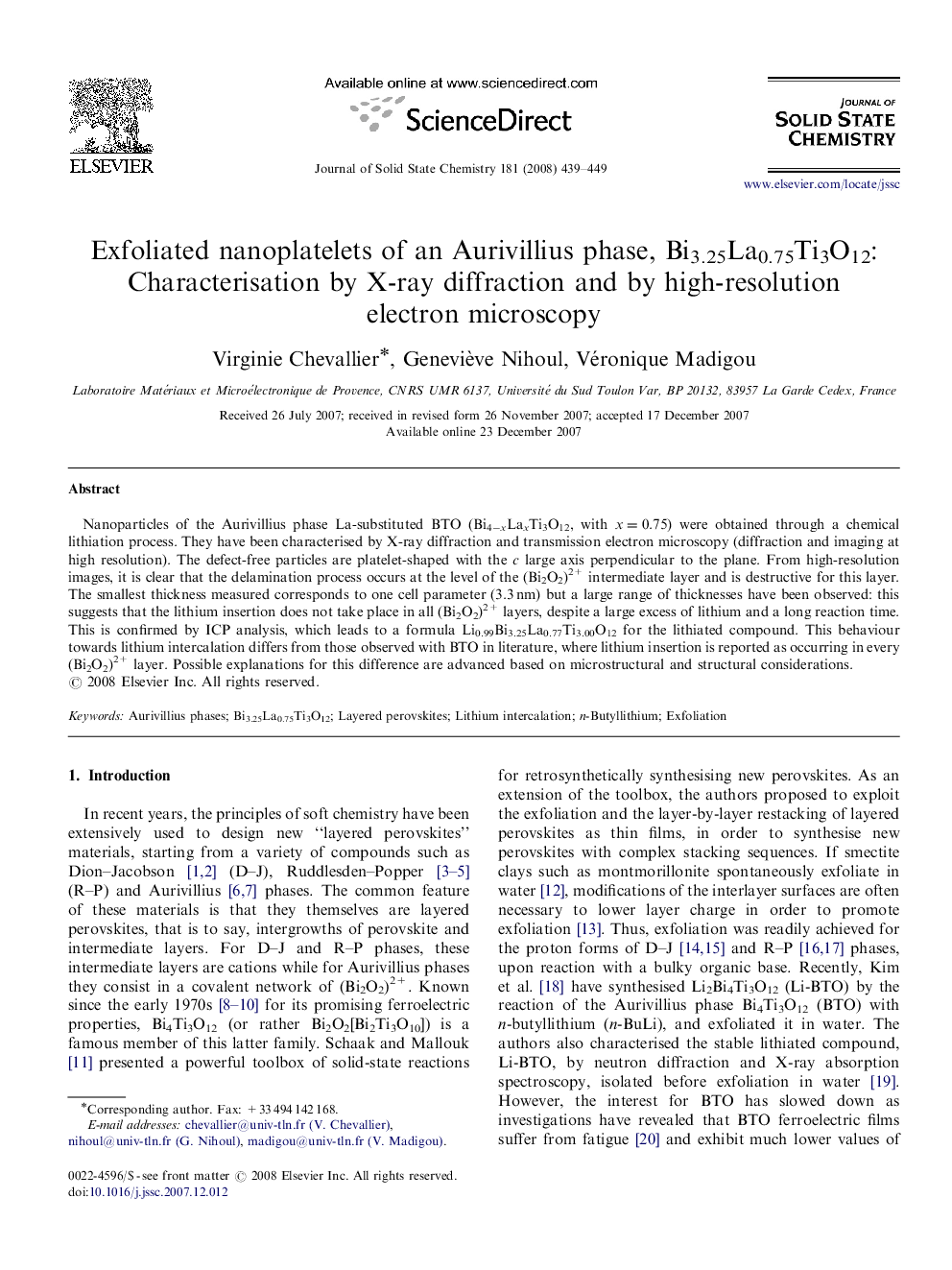| کد مقاله | کد نشریه | سال انتشار | مقاله انگلیسی | نسخه تمام متن |
|---|---|---|---|---|
| 1333708 | 979094 | 2008 | 11 صفحه PDF | دانلود رایگان |

Nanoparticles of the Aurivillius phase La-substituted BTO (Bi4−xLaxTi3O12, with x=0.75) were obtained through a chemical lithiation process. They have been characterised by X-ray diffraction and transmission electron microscopy (diffraction and imaging at high resolution). The defect-free particles are platelet-shaped with the c large axis perpendicular to the plane. From high-resolution images, it is clear that the delamination process occurs at the level of the (Bi2O2)2+ intermediate layer and is destructive for this layer. The smallest thickness measured corresponds to one cell parameter (3.3 nm) but a large range of thicknesses have been observed: this suggests that the lithium insertion does not take place in all (Bi2O2)2+ layers, despite a large excess of lithium and a long reaction time. This is confirmed by ICP analysis, which leads to a formula Li0.99Bi3.25La0.77Ti3.00O12 for the lithiated compound. This behaviour towards lithium intercalation differs from those observed with BTO in literature, where lithium insertion is reported as occurring in every (Bi2O2)2+ layer. Possible explanations for this difference are advanced based on microstructural and structural considerations.
Bi3.25La0.75Ti3O12 nanoplatelets, of which the thickness downs to one cell parameter along the c-axis, are obtained through a soft chemical lithiation process followed by exfoliation. Li+ cations intercalate in the intermediate (Bi2O2)2+ layers. However, not all of them actually accommodate lithium. Moreover, exfoliation is destructive for the host layers.Figure optionsDownload as PowerPoint slide
Journal: Journal of Solid State Chemistry - Volume 181, Issue 3, March 2008, Pages 439–449